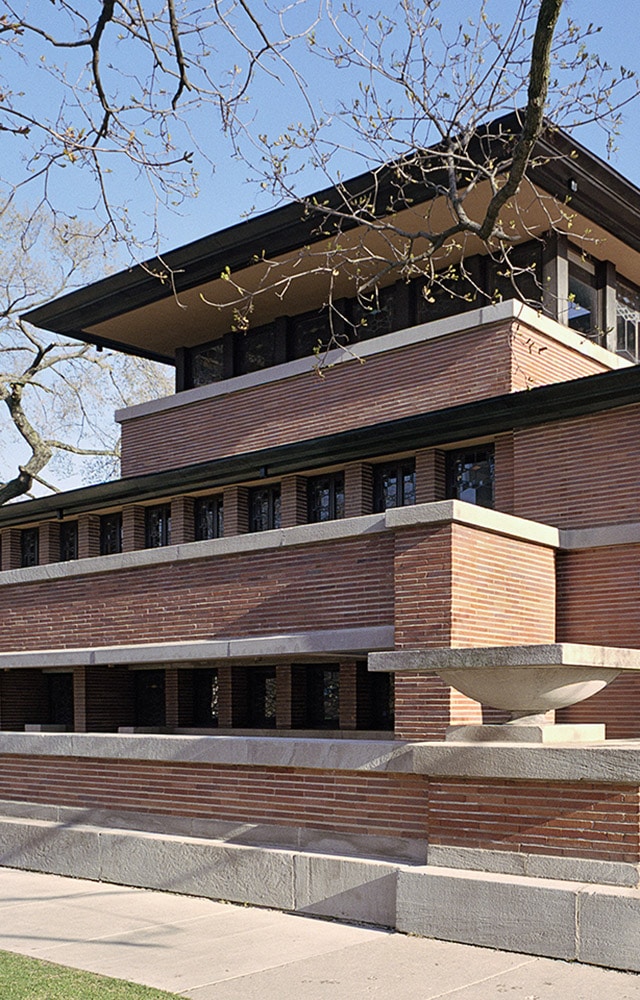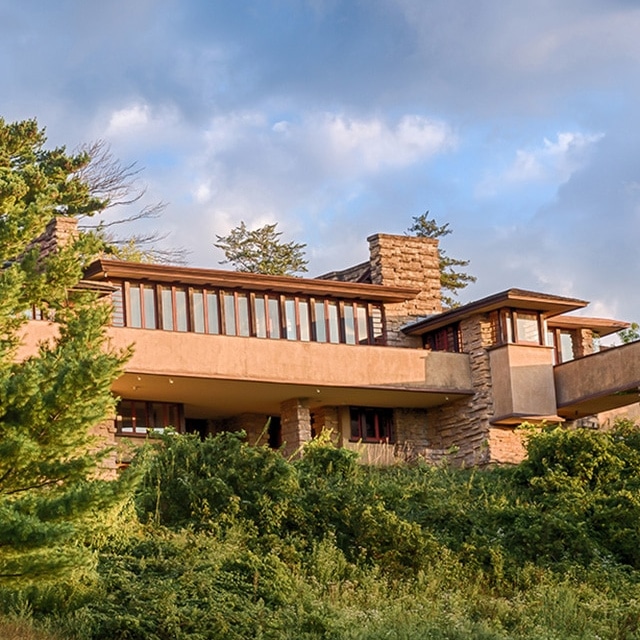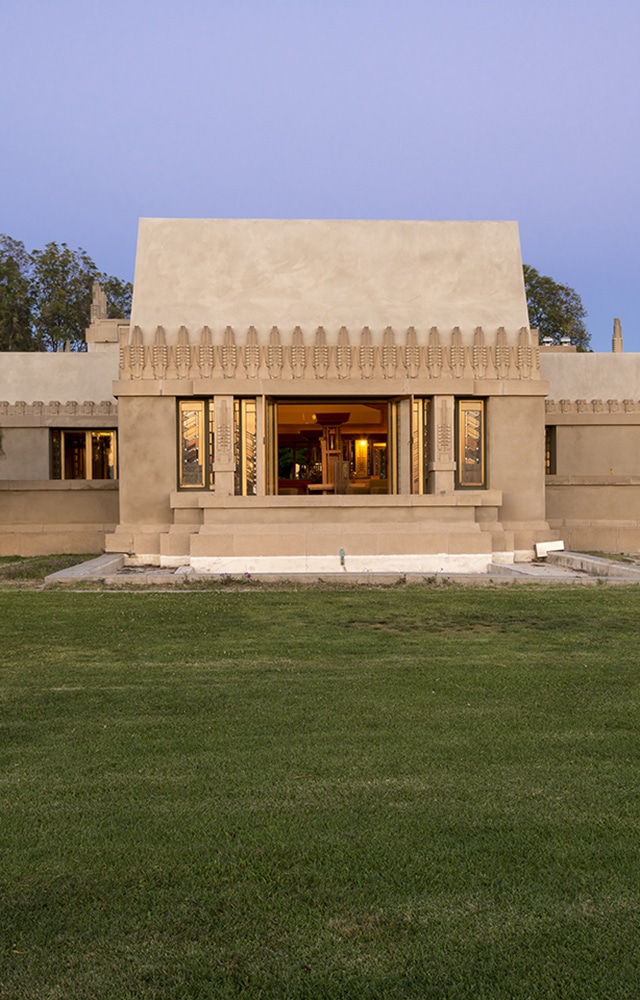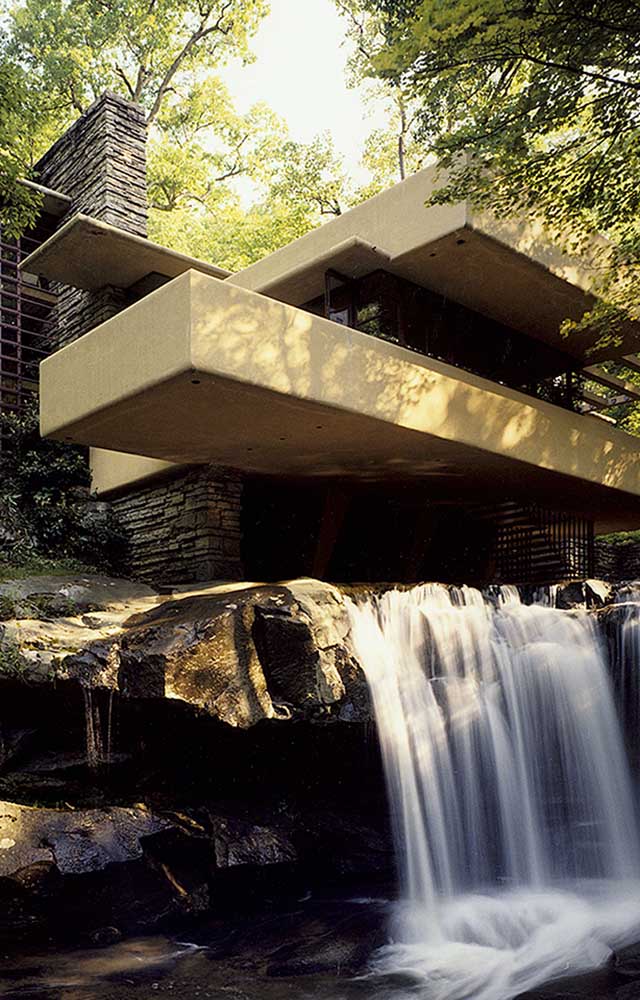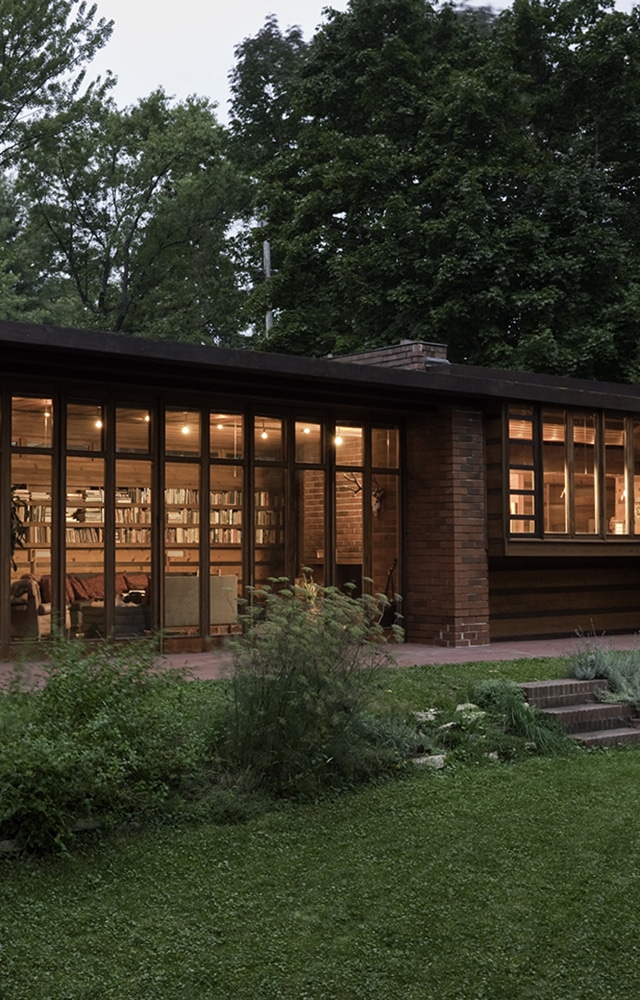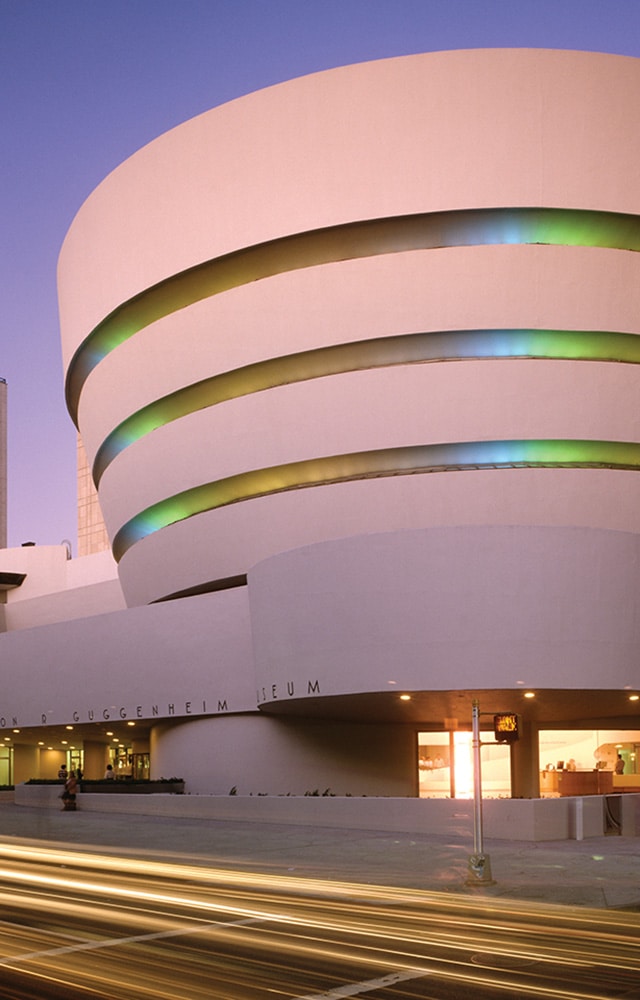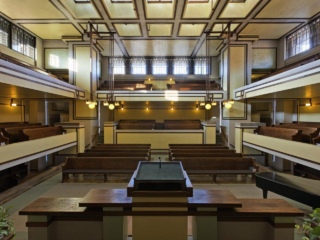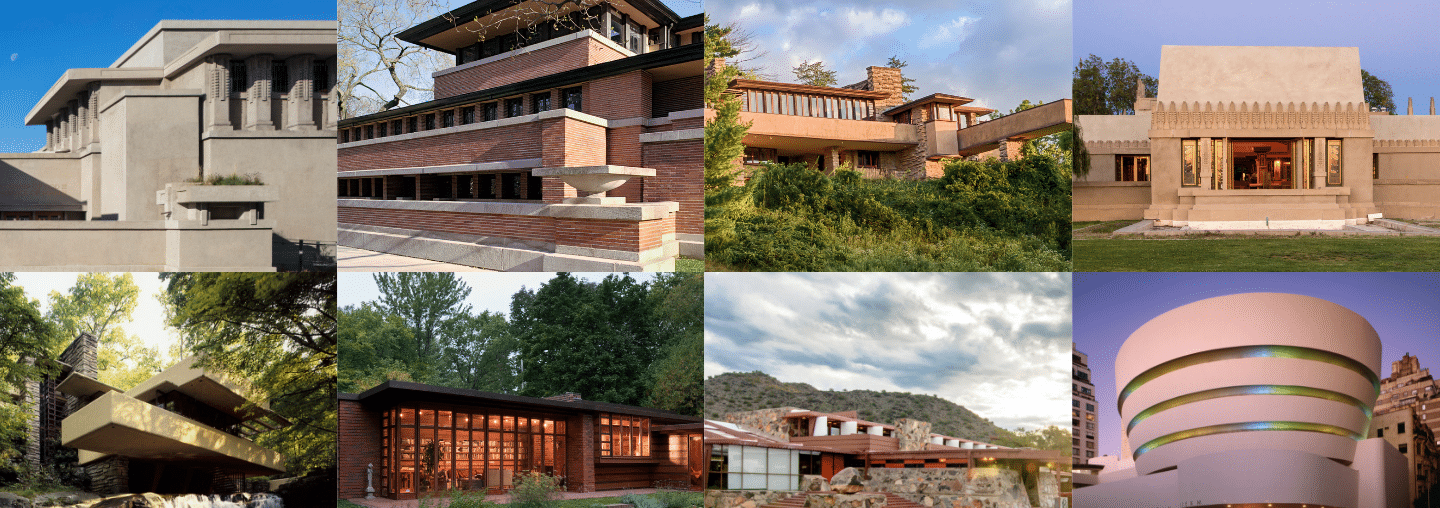
Eight Frank Lloyd Wright Sites Inscribed on UNESCO World Heritage List
Frank Lloyd Wright Foundation | Jul 7, 2019
The inscription of a collection of eight Frank Lloyd Wright-designed buildings marks the first modern architecture designation on the UNESCO World Heritage List in the United States.
After more than 15 years of extensive, collaborative efforts, eight of Frank Lloyd Wright’s major works have officially been inscribed to the UNESCO World Heritage List by the World Heritage Committee. The Wright sites that have been inscribed include Unity Temple, the Frederick C. Robie House, Taliesin, Hollyhock House, Fallingwater, the Herbert and Katherine Jacobs House, Taliesin West, and the Solomon R. Guggenheim Museum. The collection of buildings, formally known in the nomination as The 20th-Century Architecture of Frank Lloyd Wright, span 50 years of Wright’s influential career, and mark the first modern architecture designation in the United States on the World Heritage List. Of the 1,092* World Heritage sites around the world, the group of Wright sites will now join an existing list of 23* sites in the United States.
Be a part of history—join us in celebrating this special inscription with a gift to support the preservation of our two UNESCO World Heritage sites, Taliesin and Taliesin West.
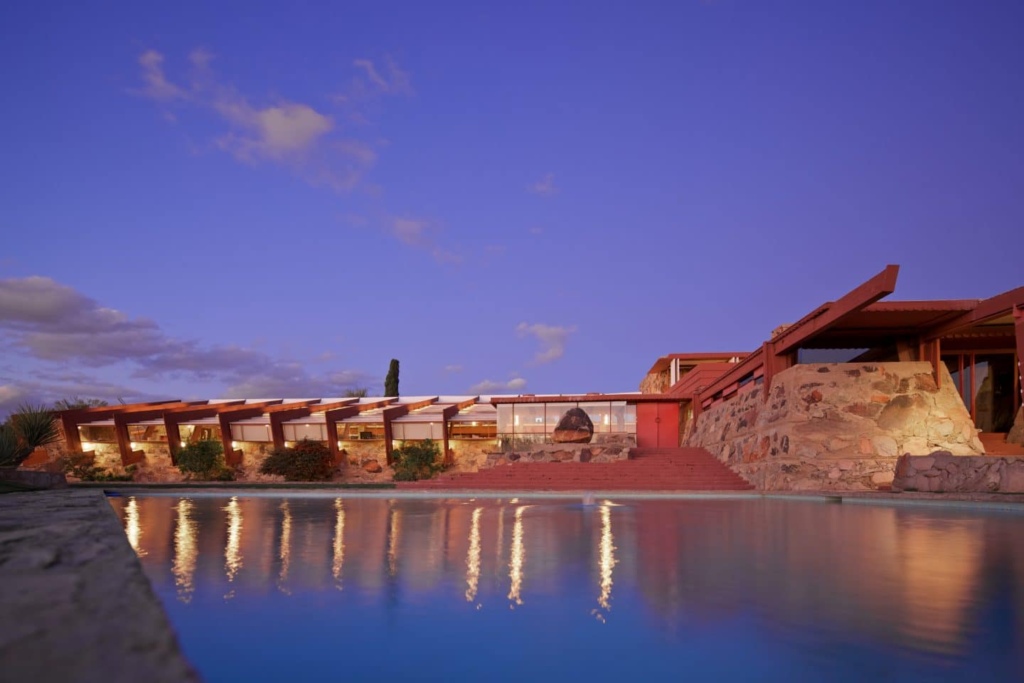
The nomination was a coordinated effort led by The Frank Lloyd Wright Building Conservancy, an international organization dedicated to the preservation of all of Wright’s remaining built works, with each of the nominated sites as well as independent scholars, generous subsidies and donations, countless hours donated by staff and volunteers, and the guidance of the National Park Service. Download the World Heritage nomination book here.
- Unity Temple. Oak Park, Illinois. Photo by Tom Rossiter courtesy of Harboe Architects. 2. Frederick C. Robie House. Chicago, Illinois. Photo by Nick Abele courtesy of Frank Lloyd Wright Trust. 3. Taliesin. Spring Green, Wisconsin. Photo by Andrew Pielage. 4. Hollyhock House. Los Angeles, California. Photo by Joshua White. 5. Fallingwater. Mill Run, Pennsylvania. Photo courtesy of the Western Pennsylvania Conservancy. 6. Herbert and Katherine Jacobs House. Madison, Wisconsin. Photo by David Heald courtesy of James Dennis. 7. Taliesin West. Scottsdale, Arizona. Photo by Jill Richards 8. Solomon R. Guggenheim Museum. New York, New York. Photo courtesy of Solomon R. Guggenheim Foundation.
“It is an immense honor to have Frank Lloyd Wright’s work recognized on the world stage among the most vital and important cultural sites on Earth like Taj Mahal in India, the Pyramids of Giza in Egypt and the Statue of Liberty in New York,” said Stuart Graff, president and CEO of the Frank Lloyd Wright Foundation. “To have this unique American legacy placed alongside these precious few sites around the globe is meaningful because it recognizes the profound influence of this American architect and his impact on the whole world. This designation is a great source of national pride, and while eight buildings are included in the inscription, it recognizes the importance of Wright’s work, embodied in every one of his buildings and designs. These sites are not simply World Heritage monuments because they are beautiful. It’s so much more than that. These are places of profound influence, inspiration, and connection.”
The eight inscribed sites have played a prominent role in the development and evolution of modern architecture during the first half of the 20th century, and continue to inspire architecture today. UNESCO considers the international importance of a potential World Heritage Site based on its “Outstanding Universal Value,” which in the Wright nomination is manifested in three attributes:
- It is an architecture responsive to functional and emotional needs, achieved through geometric abstraction and spatial manipulation.
- The design of the buildings in this series is fundamentally rooted in nature’s forms and principles.
- The series represents an architecture conceived to be responsive to the evolving American experience, but which is universal in its appeal.

World Heritage listing is primarily honorary, and the sites included in the inscription will not receive any funding, though the sites do anticipate that the inscription will stimulate and increase tourism. The listing does not impose any new regulations or restrictions on properties. The nomination documents the existing legal protections for the property and also identifies a “buffer zone” that protects the setting of the property through existing land-use laws, which is outside the formally nominated property boundary.
In 2015, the U.S. nominated a series of 10 Wright-designed sites to the World Heritage List. In July 2016, at the meeting in Istanbul, Turkey, the World Heritage Committee decided to refer the nomination for revisions. Over the past two years, the Frank Lloyd Wright Building Conservancy worked with the council of sites and leading scholars to revise the nomination and rework the justification for inscription. The National Park Service submitted the Wright nomination to the World Heritage Centre in Paris on November 20, 2018, and it was reviewed and inscribed at the 2019 session of the World Heritage Committee on Sunday, July 7 in Baku, Azerbaijan.
“This recognition by UNESCO is a significant way for us to reconfirm how important Frank Lloyd Wright was to the development of modern architecture around the world,” says Barbara Gordon, executive director of the Frank Lloyd Wright Building Conservancy. “There are nearly 400 remaining structures designed by Wright. Our hope is that the inscription of these eight major works also brings awareness to the importance of preserving all of his buildings as a vital part of our artistic, cultural and architectural heritage. All communities where a Wright building stands should appreciate what they have and share in the responsibility to protect their local—and world—heritage.”
The 20th-Century Architecture of Frank Lloyd Wright UNESCO World Heritage List Inscription by the Numbers
- 8: The number of Frank Lloyd Wright buildings inscribed to the UNESCO World Heritage List
-
15: The number years it took to complete the nomination
-
50: The number of years the sites inscribed span of Wright’s influential career
-
*1092: The number of World Heritage List properties around the world
-
*23: The total number of sites in US, only 10 of which are cultural sites
-
10: The amount of selection criteria reviewed when a site is submitted to the World Heritage List, sites must meet at least one
-
449: Number of realized Wright-designed structures
-
67: Demolished Wright-designed structures
-
380: Extant Wright-designed structures
-
12: The number of Wright’s buildings Architectural Record selected for its list of the 100 most important buildings of the 20th century. The 12 include the Solomon R. Guggenheim Museum, Taliesin, Taliesin West, and Fallingwater.
-
74: Public Wright sites, while the rest of sites are private
-
36: The number of states Frank Lloyd Wright built in
*Denotes numbers approximated prior to the July 2019 World Heritage Committee meeting in Baku, Azerbaijan..


